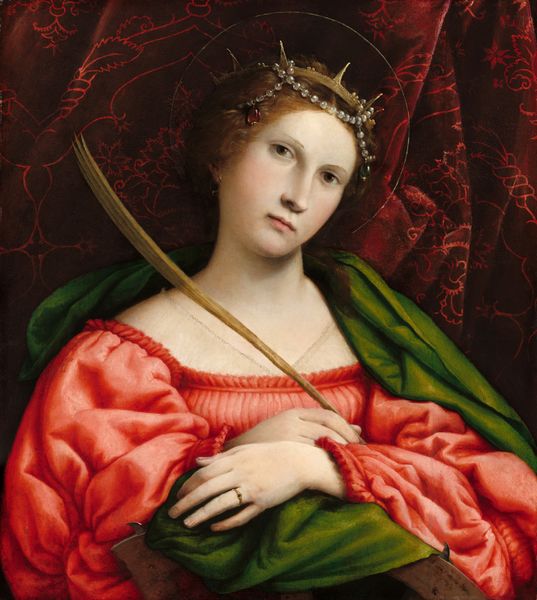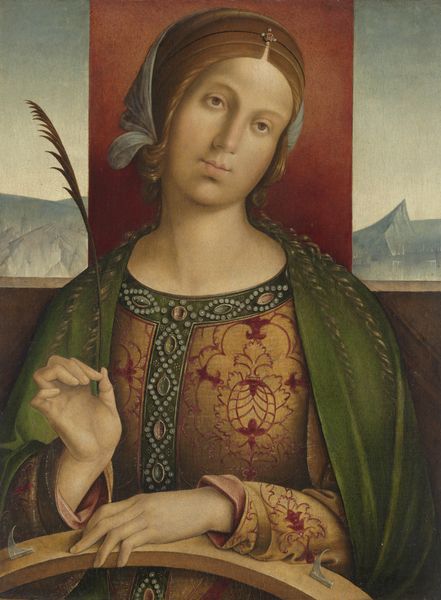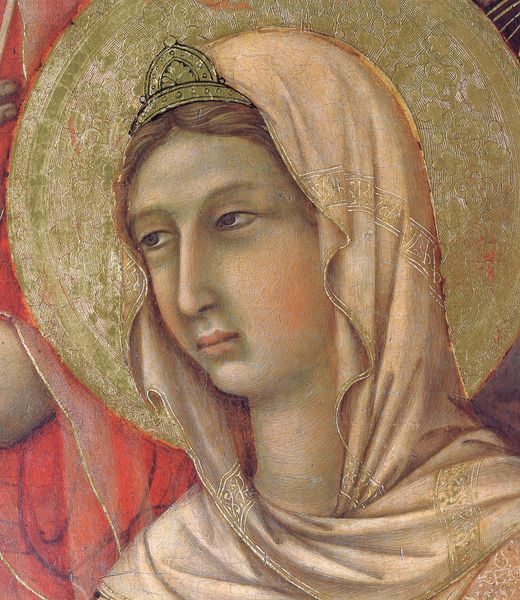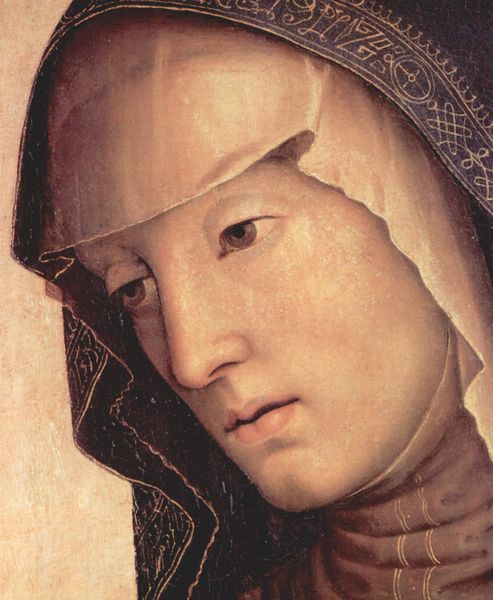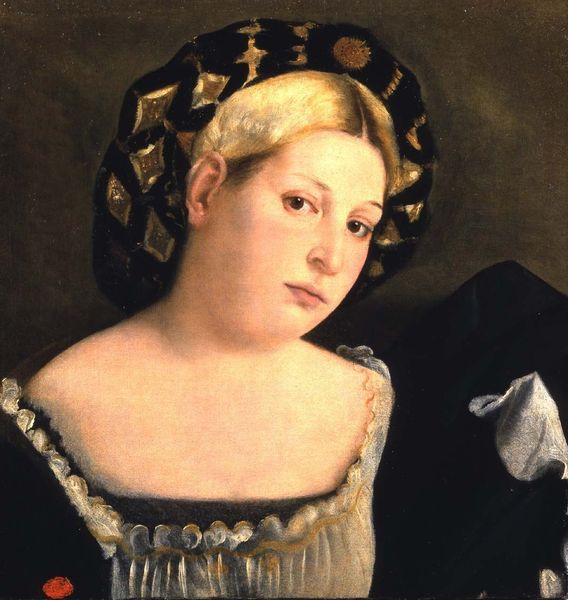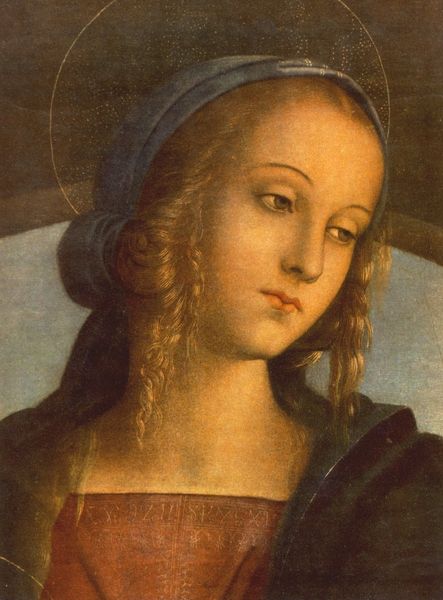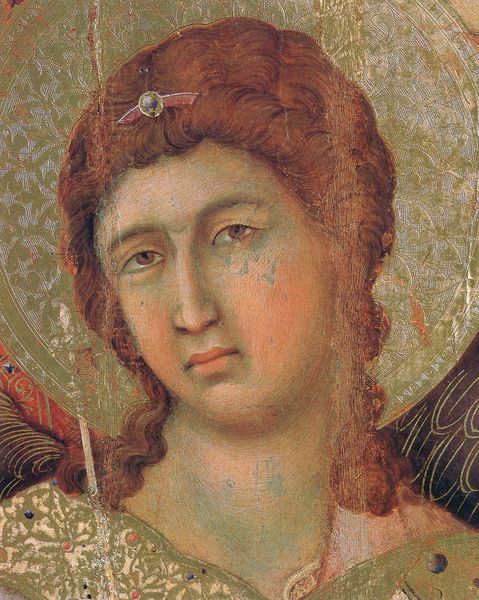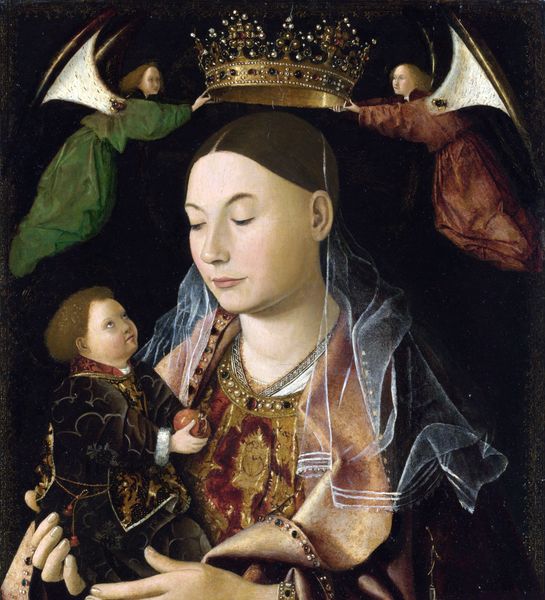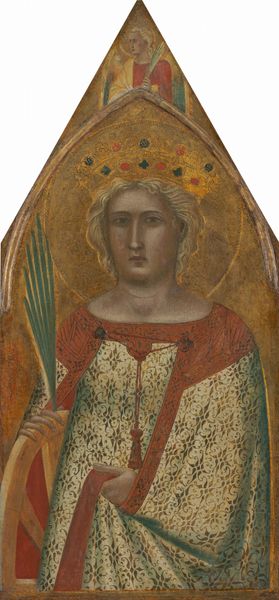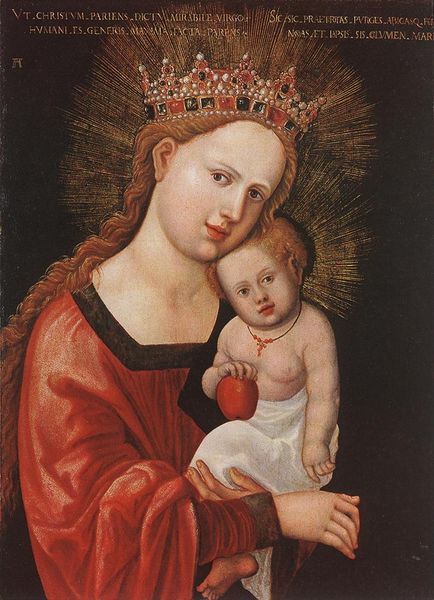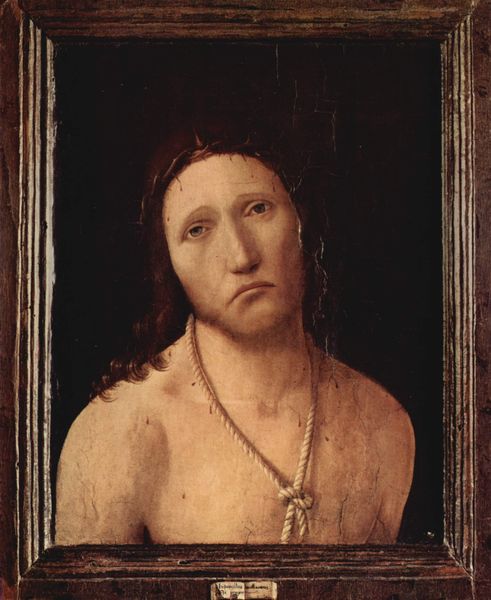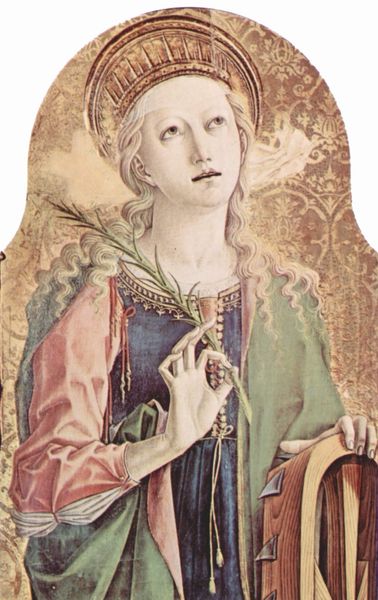
painting, oil-paint
#
portrait
#
painting
#
oil-paint
#
figuration
#
christianity
#
history-painting
#
italian-renaissance
Dimensions: 57 x 50 cm
Copyright: Public domain
Editor: This is Lorenzo Lotto’s "Saint Catherine of Alexandria," painted in 1522 with oil. The solemnity in her eyes and that delicate crown immediately caught my attention. What can you tell me about the context in which Lotto created this piece? Curator: Considering the social history of religious imagery, it’s important to remember how such paintings functioned in early 16th century Italy. Lotto created this piece at a time when images of saints were not merely devotional aids. They also reinforced societal structures. Editor: How so? Curator: Catherine, a noblewoman turned martyr, embodies both spiritual piety and worldly status. Her depiction here—opulent fabrics, elegant features—doesn't simply portray a saint. It reinforces the values of the elite. Does the somewhat staged presentation suggest anything about Lotto's intentions and patrons? Editor: Perhaps the patronage played a huge role! Was the aim less about pure devotion and more about associating wealth with religious virtue? Curator: Precisely. And think about where this piece might have hung. Was it meant for a public church or a private family chapel? That dramatically shifts the work’s potential meaning. Who might have seen it, and what would those viewers have taken away from its display of pious nobility? Editor: That really recontextualizes the artwork for me. Instead of seeing only a saint, I now see a carefully constructed representation of power and status wrapped in religious symbolism. Curator: Exactly! Examining the social fabric in which these images were woven reveals the complex negotiations between faith, politics, and artistic expression. Editor: Thank you! This new understanding truly elevates my interpretation beyond simple aesthetic appreciation.
Comments
No comments
Be the first to comment and join the conversation on the ultimate creative platform.
